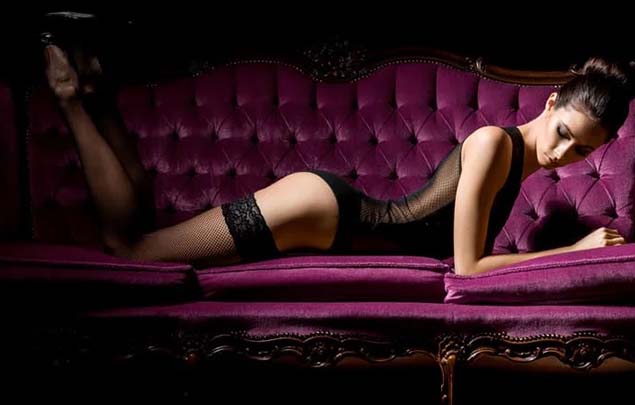The Kamasutra, composed by Vatsyayana, is often misinterpreted as merely a catalog of sexual positions. However, its deeper essence lies in exploring the art of living, intimacy, and love-making as a form of human connection. Among the various love postures described in this ancient Indian text, the Mare’s Position (also known as Ashwa Vatkarana, meaning “like a mare”) stands out as a vivid symbol of female dominance, sexual liberation, and expressive passion.
The position is notable for the woman’s active and assertive role during intercourse, drawing inspiration from the unrestrained and powerful movements of a mare. It highlights the wild, instinctual, and sensual aspects of female sexuality that often remained unexplored in patriarchal societies.
In this article, we will delve into the philosophical, physical, and symbolic significance of the Mare’s Position, exploring its technique, variations, advantages, emotional aspects, and relevance in both traditional and modern contexts.
Philosophical and Symbolic Significance
In traditional Indian society, women were often expected to be passive recipients in sexual and emotional matters. However, the Kamasutra subtly breaks this mold by including positions where the woman takes charge—none more symbolically potent than the Mare’s Position.
Embodying Feminine Power
The position evokes the imagery of a mare in heat—untamed, spirited, and fully immersed in her desire. In the animal world, a mare in estrus chooses her mate and often controls the mating process. Vatsyayana’s inclusion of this metaphor serves to elevate female agency and sexual intelligence.
Tantric Undertones
The Kamasutra, though not a tantric text, shares spiritual common ground with tantra. In tantric sex, both masculine and feminine energies must balance and flow. The Mare’s Position channels Shakti, the divine feminine force, allowing the woman to dominate not just physically but also spiritually.
Technique and Execution of the Mare’s Position
The Mare’s Position primarily involves the woman mounting the man, similar to the modern “cowgirl” or “woman-on-top” position. However, what differentiates it is her assertive control over movement, pacing, and rhythm, and the symbolic emulation of a mare’s wild, galloping thrusts.
Step-by-Step Description
The man lies flat on his back in a relaxed, receptive posture.
The woman straddles him, placing her knees on either side of his torso.
She gently lowers herself onto his erect penis, ensuring comfortable penetration.
Once joined, the woman begins to move her pelvis in a rhythmic motion—up and down, back and forth, or in circular rotations.
Her movements mimic a mare’s gait: unpredictable, passionate, and rhythmically intense.
Her upper body may lean forward, upright, or backward depending on her comfort and angle of stimulation.
Eye Contact and Connection
One unique aspect of this position is emotional visibility. Eye contact can be maintained throughout the act, intensifying intimacy. The woman, being in control, can modulate emotional engagement—either deepening it through gaze or retreating into her inner erotic world.
Emotional and Psychological Dimensions
The Mare’s Position is not merely a physical act but an emotional declaration of confidence and sensuality.
Empowerment and Confidence
Many women report feeling powerful and confident during this position. Unlike conventional postures where men dominate, the Mare’s Position allows the woman to:
- Control the depth and speed of penetration
- Adjust the angle for maximum clitoral or G-spot stimulation
- Choose when and how she wants to climax
Expression of Desire
The galloping motion reflects untamed desire. It allows a woman to express her lust without shame or hesitation. This is especially powerful in cultures or relationships where such expression is otherwise muted.
Mutual Surrender
While the woman controls the physical motion, the man must surrender—trusting her rhythm and submitting to her lead. This dynamic creates a sacred space of mutual vulnerability, breaking traditional gender roles and allowing emotional closeness.
Physical Benefits and Arousal Dynamics
Enhanced Clitoral Stimulation
With her on top, a woman can direct the thrusting to favor clitoral stimulation, leading to intense orgasms. She may grind against the pubic bone or alter her pelvis’s angle to engage deeper erogenous zones.
G-Spot Activation
By leaning forward or backward, the woman can change the penis’s angle, potentially hitting the G-spot, located a few inches inside the front wall of the vagina.
Exercise and Core Strength
The position also requires leg, thigh, and abdominal strength. The rocking and lifting motions engage the core, hips, and glutes, offering a pleasurable form of physical activity.
Variations and Enhancements
The Mare’s Position can be adapted and enhanced in several ways, depending on the couple’s flexibility and comfort.
Reverse Mare (Reverse Cowgirl)
The woman faces away from the man, allowing him to admire her back, hips, and buttocks. This variation emphasizes visual stimulation and may reduce emotional intensity, focusing more on physical pleasure.
Seated Mare
The man sits upright, legs extended or crossed, and the woman straddles him. This variation increases body-to-body contact, embraces, and synchronized breathing—deepening emotional intimacy.
Kneeling Mare
Both partners kneel facing each other, and the woman wraps her legs around the man’s waist. It mimics the movement of a rearing mare and can be very stimulating for both.
Use of Props
Pillows under the man’s hips can elevate penetration. A mirror, dim lighting, or sensual music can heighten erotic energy. Restraints or blindfolds (if consensual) can introduce power play and fantasy.
Historical and Literary Context in Kamasutra
Vatsyayana, the sage behind the Kamasutra, was remarkably forward-thinking for his time. He did not relegate women to subservient roles in pleasure but offered them freedom and voice through detailed discussion of female-led positions.
The Mare’s Position is mentioned as a form of sexual congress where the woman exhibits boldness, playfulness, and erotic independence. It contrasts with other positions that are more passive or ritualistic. In Vatsyayana’s worldview, the perfect union occurs when both partners contribute equally to sensual pleasure and emotional balance.
The Mare’s Position and Relationship Dynamics
Beyond physical gratification, this position can transform the dynamics of a relationship.
Breaking Gender Stereotypes
In many cultures, men are socially conditioned to lead and women to follow. Reversing these roles—even in the bedroom—can have far-reaching effects. Men experience the freedom of surrender, and women enjoy the thrill of leading.
Communication and Trust
Because the Mare’s Position requires synchronization, couples must communicate openly—verbally and nonverbally. Feedback on pressure, speed, and emotional comfort builds trust.
Reigniting Passion
For long-term couples, trying the Mare’s Position can reignite dormant sparks, breaking sexual monotony and introducing playful experimentation.
Challenges and Considerations
While the Mare’s Position is liberating, it may present some challenges.
Physical Strain
Women with knee, hip, or back issues may find it physically demanding. Supportive pillows, frequent breaks, or slower rhythms can alleviate discomfort.
Psychological Barriers
Some women may feel self-conscious about being “on display.” Body-image issues or cultural conditioning may make it hard to fully embrace this position. Gentle encouragement, dim lighting, and a supportive partner can help ease these concerns.
Male Comfort and Arousal
Not all men may be used to relinquishing control. Initially, this may affect their arousal or performance. With time, many find the experience liberating and deeply pleasurable.
Cultural Relevance in Modern Times
In the 21st century, sexual empowerment is gaining mainstream attention, and ancient texts like the Kamasutra are being revisited through a modern, egalitarian lens. The Mare’s Position aligns beautifully with contemporary ideals of:
- Consent and agency
- Exploration without shame
- Emotional and sexual parity
- It resonates with movements that advocate for women’s sexual freedom, men’s emotional openness, and mutual pleasure.
The Mare’s Position in Popular Culture
While not always referred to by its ancient name, the essence of the Mare’s Position appears in films, literature, and art—often portrayed as sensual and empowering. Modern sex educators and therapists encourage the position for its many benefits and its ability to restore sexual balance in relationships.




